Walkabout: Who Wouldn’t Want to Live at Tiffany’s?
Some of Brooklyn’s most charming blocks are those one or two block little streets that are tucked in just about every neighborhood. There are all kinds of reasons why they exist; some are developer-designed enclaves that were added to the street grid, while others are streets that were created to accommodate a specific business or…
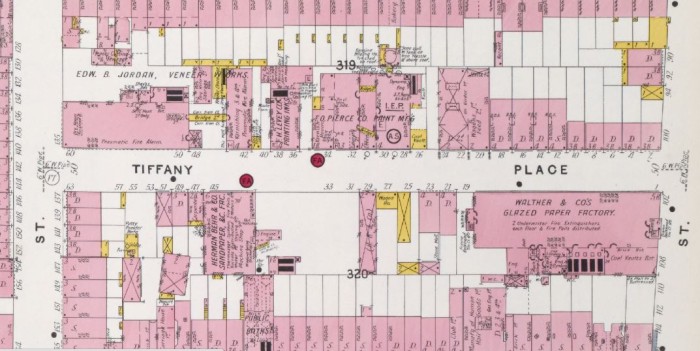

Some of Brooklyn’s most charming blocks are those one or two block little streets that are tucked in just about every neighborhood. There are all kinds of reasons why they exist; some are developer-designed enclaves that were added to the street grid, while others are streets that were created to accommodate a specific business or industry. Still others were added because the topography allowed for just one more small street in order to make sense in directing traffic or creating lots of a certain size. Whatever the reason, they are great, especially if few people outside of the neighborhood know about them. Who wouldn’t want a secret street?
The bisection of Red Hook by Robert Moses’ Brooklyn Queens Expressway created some new streets, and made others harder to get to. But even before the highway was cut, the neighborhood once known as South Brooklyn already had a few one block streets. It is home to four “places”: Tompkins Place, Strong Place, Cheever Place and Tiffany Place. The first three are purely residential streets in Cobble Hill, but Tiffany Place, on the other side of the BQE cut, has long been a mixture of residential and manufacturing.
Tiffany Place…what a great name. It must have been named after one of the great Tiffany’s of Gilded Age fame. If not Louis Comfort Tiffany, than surely it was named after his father, the founder of the famous jewelry store in Midtown Manhattan. That Tiffany, the one whose bling inspired thousands of people to name their daughters for a fabulous emporium of gold, silver and expensive jewels. The name means quality and riches. Who wouldn’t want to live on a street with the Tiffany name?
Unfortunately, Tiffany Place is not named after Louis Comfort Tiffany or his father, Charles Lewis Tiffany. Even the excellent book on Brooklyn’s street names, “Brooklyn by Name,” by Leonard Bernardo and Jennifer Weiss got that one wrong. The myth is that the great stained glass maker and interior designer had a glass factory on the block in the late 19th century, and the street is named after him.
The legend goes on to claim that Tiffany’s factory was number 1 Tiffany Place, a large beautiful factory/warehouse building that was turned into condos not so long ago. Hate to tell you, but as George Gershwin, who probably bought a few things in Tiffany’s during his lifetime, once wrote, “It ain’t necessarily so.”
A quick look at the Brooklyn Eagle archives bears that out. The first mentions there of Tiffany Place are in 1847. Louis Comfort wasn’t even born yet, and Papa Tiffany was still establishing his livelihood. He and a partner opened a shop in Manhattan in 1837, selling glassware, cutlery, porcelain and jewelry. He married his partner’s sister, and welcomed Louis Comfort Tiffany into the world in 1848. Tiffany Place had already been named at that point.
The documentation about the one block street in the industrialized area of Red Hook is pretty sparse. We do know that before it became Tiffany Place, the street was called Waverley Place. The latter name was interchangeable in official notices in the Eagle in 1848, when some of the land making up the street was to be sold. At that time, the block had houses on it, and perhaps some industry as well. In 1849, the city of Brooklyn paved the streets with Belgian blocks, which still remain, and would soon lay down bluestone sidewalks.
Many of the lots on Tiffany Place were owned by a man named John O’Donnell. He owned a lot of property in the Red Hook area, with parcels on many different streets. Another landowner on the block was John Van Nostrand, a wealthy merchant who lived nearby in Cobble Hill. Nostrand Avenue is named for his family.
By the early 1850s, O’Donnell was building stables and houses on Tiffany. He had several stables in the neighborhood, all of which caused a great deal of complaining by neighbors, as apparently, he was not a great steward of his properties and his stables were ill-kept, and filthy. He spent a lot of time explaining himself to magistrates and paying fines. He built at least one house on the block, and had another one moved there from Congress Street.
No one is sure where the Tiffany name for the street comes from. There were a lot of Tiffany’s in New York and Brooklyn, as the extended Tiffany family was huge and quite prolific. Charles and Louis Tiffany’s line was descended from Humphrey Tiffany who came to Massachusetts from England in 1660. Apropos to nothing, Humphrey Tiffany died in 1685 when he was struck by lightning while traveling on the road from Swansea to Boston.
The early 19th century saw many different Tiffany’s in Brooklyn, including one named George, who was a Brooklyn city official. Maybe the street was named after him. Complicating the issue is the fact that there were a lot of George Tiffany’s in Brooklyn, as well. The most famous George Tiffany was a State Senator who was married in 1861 to Isabelle Perry, the daughter of Commodore Perry, who opened Japan to trade from the West. She was also the sister of Caroline Perry Belmont, wife of banker August Belmont, for whom the Belmont Stakes is named. George died in 1886, so the street can’t be named after him. He was a least a cousin of Charles and Louis Tiffany.
At any rate, before the Civil War, Tiffany Place was partially developed, with a few working class homes and flats. Any houses that would have been originally single family would probably have been subdivided into rooming houses or split up into small apartments. In addition to the busy industry at the Red Hook piers, the rest of the neighborhood was developing into an industrial area full of all kinds of factories and warehouses. In 1860, the city ordered that all undeveloped lots in the neighborhood had to be fenced in. Tiffany Place, it was noted, had several empty lots.
After the war was over, Tiffany Place was getting a reputation as a rather seedy block. There were many incidents of people who lived on the block being arrested for public drunkenness, assault, theft and other crimes of that sort. In 1873, public health officials complained that the entire block of Tiffany Place was filthy beyond belief, with an accumulation of trash and dirt, causing sickness and spreading disease. They wanted the city to do something before something highly contagious spread from Tiffany Street on out into the community.
Meanwhile, the reports in the papers regarding the criminal activities and child abuse, fights and public drunkenness on the block increased. But the papers also reported more and more factories being opened on the block, crowding out the homes. By 1879, 9-11 Tiffany Place was home to the American Carpet Lining Company, which manufactured cotton carpet pads. They employed about 30 people, mostly women. On January 21, 1879, the bales of cotton stored on the ground floor caught fire from sparks coming from machinery that adhered the cotton lining to a paper backing. The whole factory went up in flames. Fortunately, everyone escaped, although some had to jump from the third floor windows.
Also on the block was the Buchanan & Lyalls Cigar Factory and a sewing factory that made mourning draperies. Another factory was the Vulcan Corset Steel Works Factory. There girls spent their days tipping steel corset stays with rubber to prevent them from puncturing someone’s ribcage when they bent over. They went on strike for better pay.
The map from 1886 shows the corset factory, as well as the Paper Stain Works, Pierce & Co’s Paint Company, the H. Behr & Co. Sandpaper Company, the Hobson & Co. Wall Paper factory and Thomas Watson & Company Plug and Smoking Tobacco Company. The map also shows twelve row houses in two groups, across the street from each other on one end of the block.
By 1904, things had changed on the block, as shown on the insurance map for that year. Number 1 Tiffany Place was now home to a huge factory for the Walther & Company Glazed Paper Factory. They made fancy wallpapers. This building was never home to a Tiffany stained glass factory. This factory replaced a smaller factory on that corner, as well as all but two of the row houses on that side of the street. Down the block was still the Behr Sandpaper Company, a lot of empty space, and a couple more row houses.
Across the street, the even numbered buildings included the Edward Jordan Veneer Company, which took up a third of the block, as well as a fire alarm company, a printing company, the Pierce Paint Company was still there, and so was another unmarked factory building, several tenement buildings and the row of houses that had been there in 1886.
Fast forward to today, remarkably, the tenements survived, and so did one row house. Most of the factory buildings also survived, and all seem to now be converted to housing. Tiffany Place is now an interesting mixture of 19th century factory buildings, the largest and nicest of which is the Walther & Co. building, the tenements, a couple of newer factory buildings, open lots and a couple of modern condo buildings. The famous Tiffany name is represented only by the signature blue bags and boxes brought home by the inhabitants of the condos and converted factory buildings. It’s still a great story, but the truth is better – this was a thriving and unique residential and industrial enclave. Even the cobblestones are still here.
A shout out to the great blog “Lost City,” which provided a guidepost to my own research.
(Photo: 1904 map. New York Public Library)
GMAP
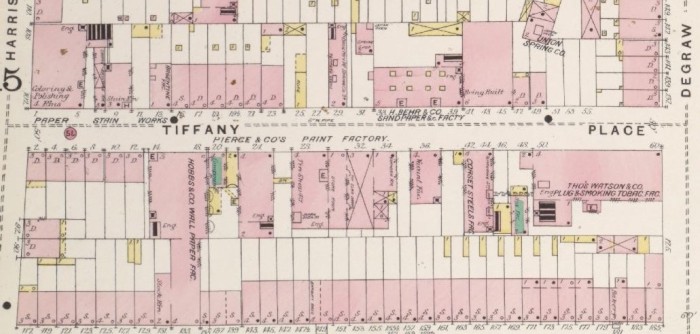
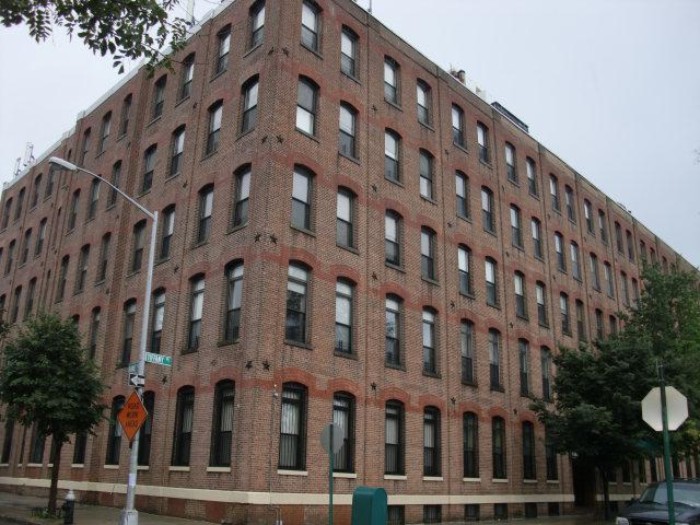
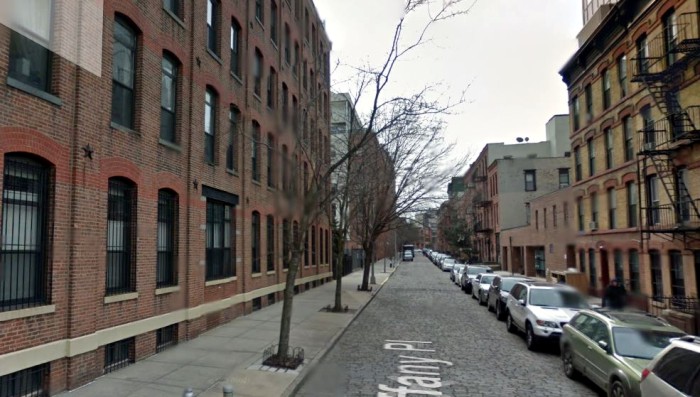

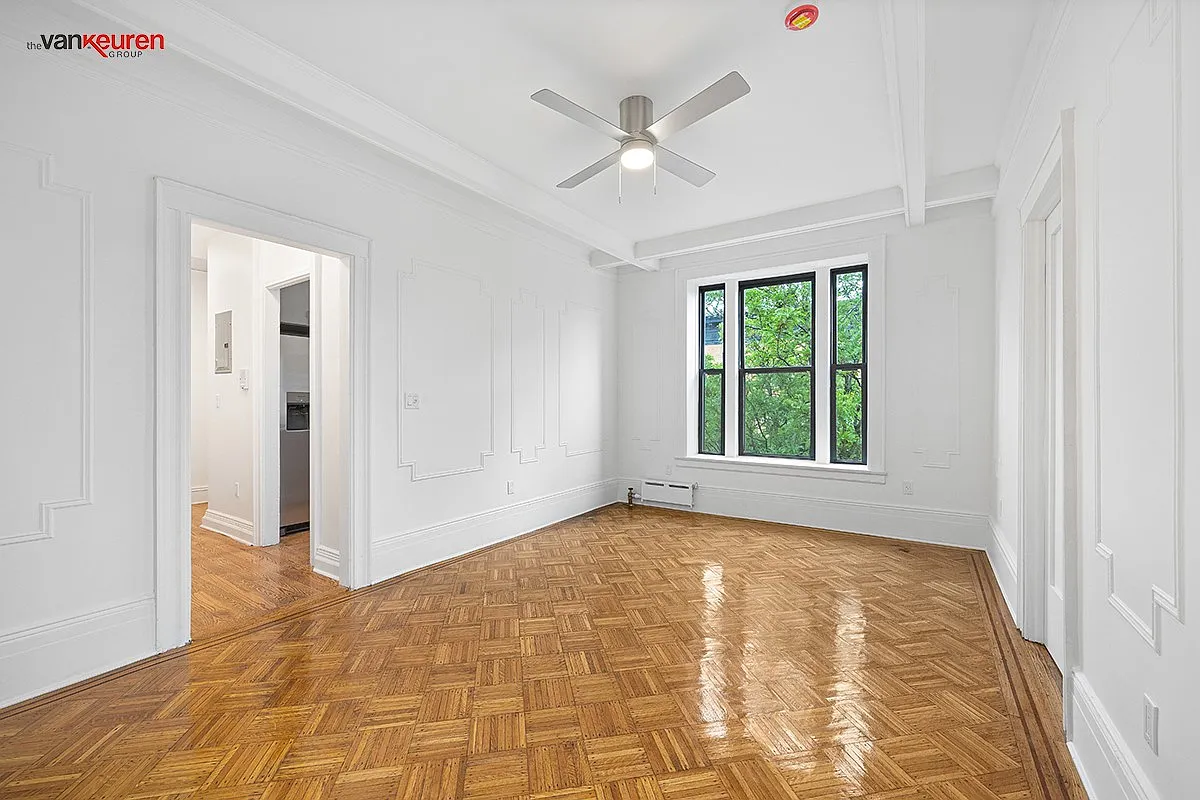
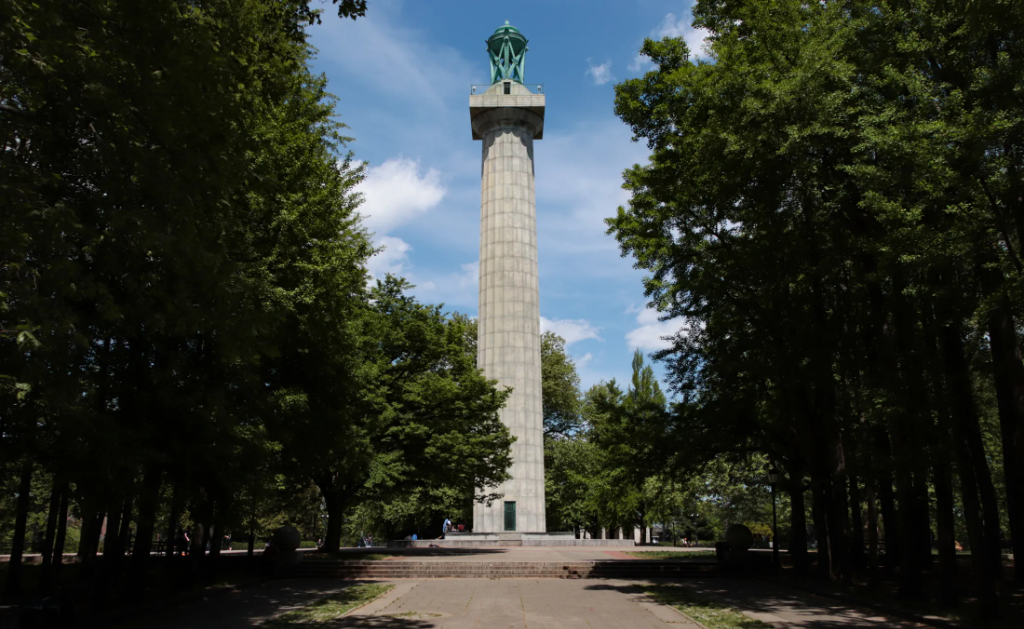

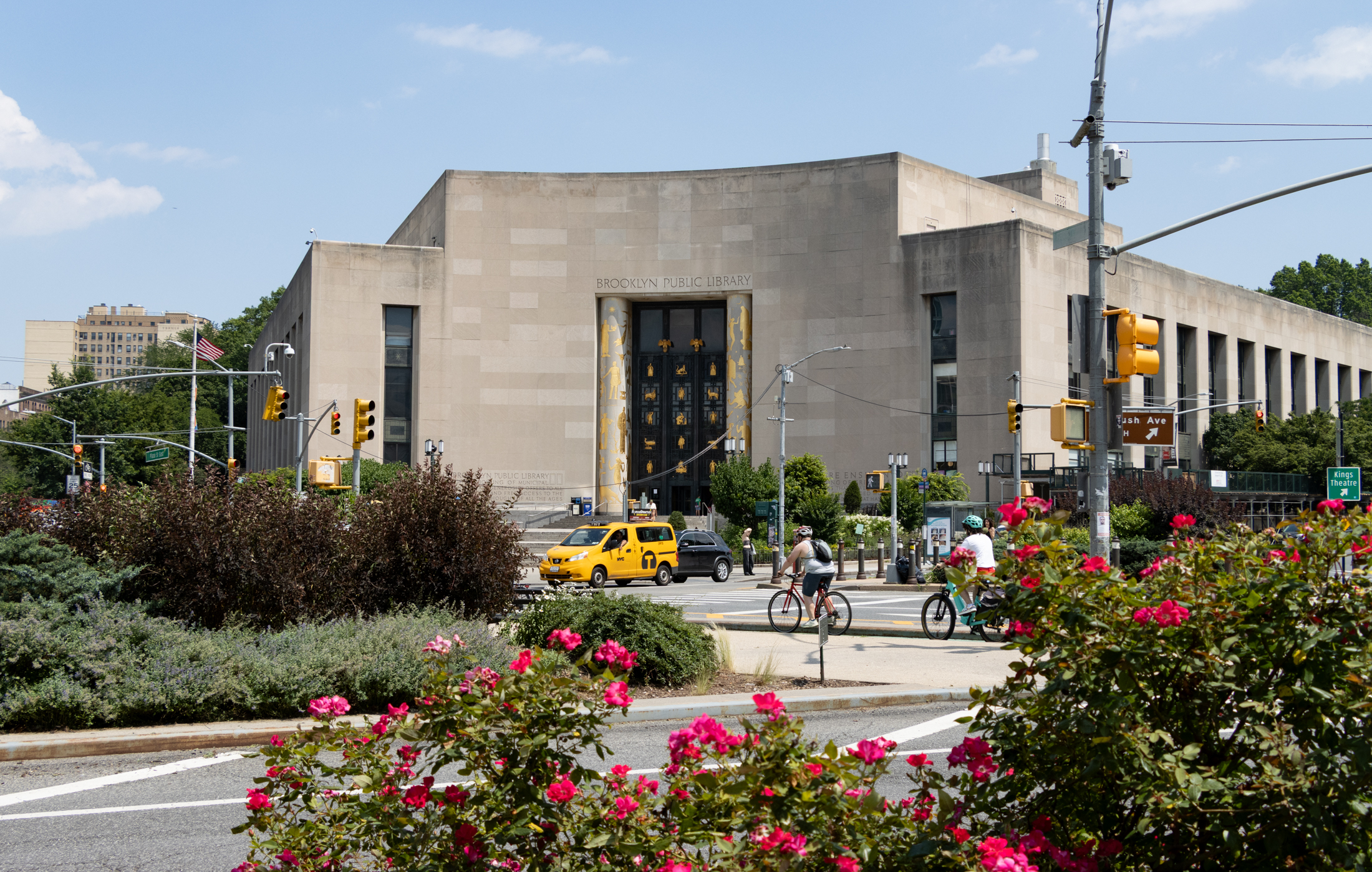
I live on Tiffany Place and would love to get my hands on this street map. Any ideas?
Asher – You say you have copies of the maps? How did you get them?